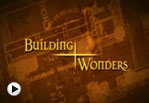Investigating Historical Documents
Support materials:
- Floating Harbour Glossary
- Dictionary
- Magnifiers
- Selection of historical documents
- Contemporary and Historical Ordnance Survey (OS) maps (Alan Godfrey Maps produce large scale plans of OS maps for towns throughout the UK and Ireland)
Questions to ask
- Historical documents can be difficult to read. Discuss why and what you can do to make them easier to read and understand.
- Discuss whether the document is a Primary or Secondary source.
- Discuss the importance of documents by setting them in the context of other sources of historical evidence, e.g. oral histories, maps, images, film, artefacts.
- What information can a document tell us about the past e.g. use of language, literacy, facts and figures.
- Why was the document made? What does it record?
- Discuss the reliability of documents as a historical source and what this can tell us about the importance of using more than one source of evidence.
- Take into account: the writer, the content of the document, who they were working for, motives, political climate, national and international events, e.g. creation of the Floating Harbour, relocation of the City Docks to Avonmouth, World War II, etc.
- Compare the information in the document to another historical source of information about the same event. What are the differences and similarities?






